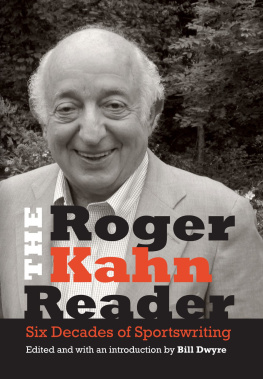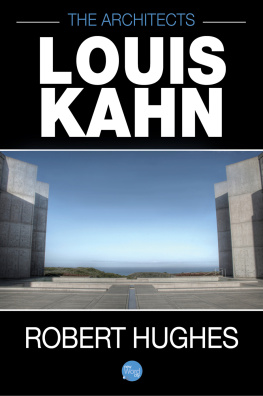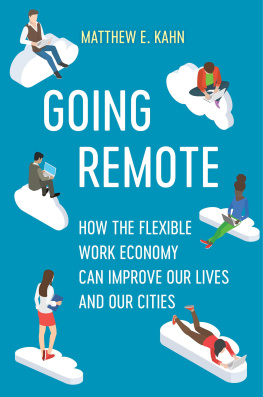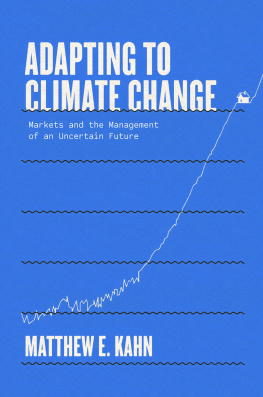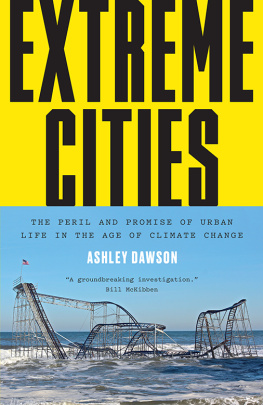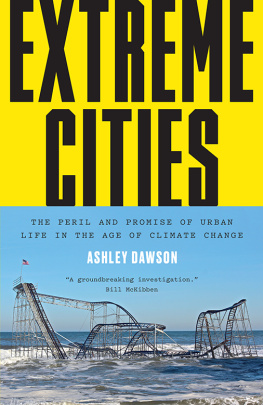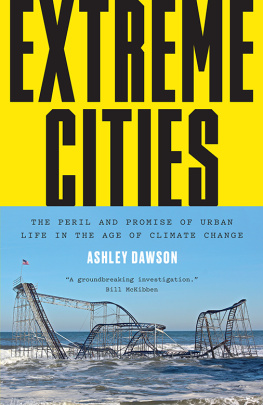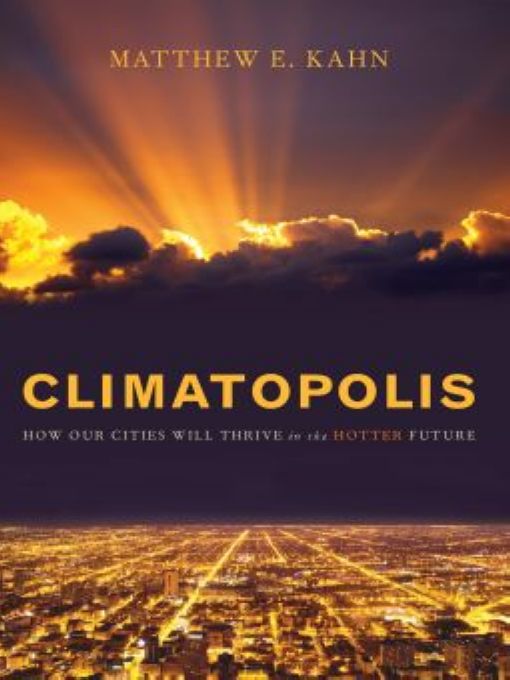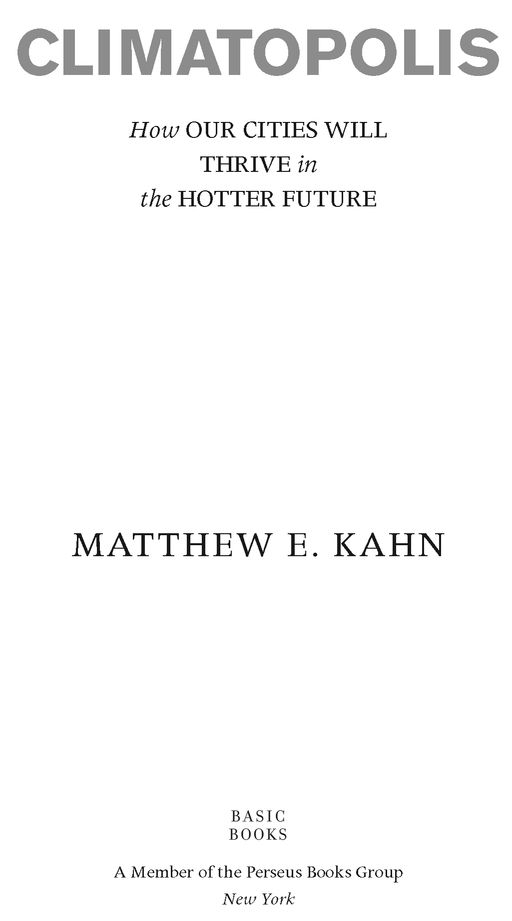Table of Contents
TOO MUCH GAS
Shanghais growth over the last thirty years has been staggering. Measured in cars, concrete, new buildings, new homes, and air travel, this city has been transformed from an industrial hotbed of revolutionary leftism into one of the worlds superstar cities. The neon-lit buildings along its Bund waterfront feature five-star hotels and high-end restaurants such as Jean Georgeenough in quality and quantity to compete with any other world-class city, from New York to Paris.
The rise of this mega-city foreshadows Chinas trajectory in the twenty-first centuryand that of the rest of the world. Hundreds of millions will be moving to cities like Shanghai to strike it rich and escape the rural life as more and more of the worlds population continues the shift thats been going on, in fits and starts, since the Industrial Revolution: moving from the rural to the urban. By 1950, 30 percent of the worlds population lived in cities. In 2000 this portion grew to 47 percent, and the United Nations predicts it will rise to 60 percent by 2030. These would-be city dwellers want economic opportunities and material comforts that we take for granted: cell phones (and decent service), personal computers, access to private transportation, and household air conditioning.
Given this search for the good life and the amenities that go with it, the move toward urban life makes sense. Cities are capitalisms growth engine, offering opportunity along every dimension from finding a job to support oneself, to finding a mate to spend money on, to great cultural events to attend, to fantastic restaurants of all kinds. And, maybe, a bit later, parks to take the kids to. City growth has lifted billions of people out of poverty.
Thats a good thing, although many lament the loss of agricultural and pastoral life. But how many of the those who bemoan the loss of farm living have gotten up before sunrise to milk cows by hand or slop pigs or pitch hay? I havent, but Im pretty sure it wouldnt be much fun, day after day. If you dont believe me, contrast Seinfelds life in New York City with the cheery world of the Swiss Family Robinson.
Prominent writers such as Jared Diamond, author of the best sellers Guns, Germs, and Steel and the more foreboding Collapse, are deeply worried about the environmental consequences of the growth of the middle class in the developing world. Diamond, and most environmentalists, charge capitalism with causing climate change because urban growth provides us with the income to afford a Hummer and a big house. Capitalist growth, they say, perpetuates itself with an advertising- and consumer-oriented culture (The American Dream) that manipulates our desires to consume more and more carbon-intensive stuff: lawnmowers, air conditioners, cars, car seats, disposable diapers, See n Says (kids products produce a lot of carbon), and so on. Recent macroeconomic trends support some of these claims. The worlds population, per capita income, and greenhouse gas emissions are all rising. The worlds population will have grown from 2.6 billion in 1950 to 6.9 billion by 2010.
Thats a lot of CO2. Leading climate change researchers have concluded that to protect the planet from potentially catastrophic climate change risk, we must stabilize atmospheric carbon dioxide concentration at 500 parts per million (ppm) or even as low as 350 ppm. But this would require reducing our total global carbon dioxide emissions to no more than 19.1 billion tons per yeara little less than half of whats predicted for 2030. In a world with 7 billion peoplethe worlds current populationwe would have to shrink carbon emissions to an average of about two and one-half tons per person per year. To put this in perspective, a car that gets about 25 miles to the gallona Toyota Corolla, which happens to be the most popular car in the United Stateswould exceed the 2.5-ton target at 7,500 miles per year (the average driver travels something like 12,000 miles a year). But driving is not our sole source of greenhouse gas emissions. When we turn on the lights, eat a steak, order a coffee, take a shower, send an e-mail, and do countless other little things during the day, they all result in extra greenhouse gas emissions.
Are you ready to cut back? If so, are you willing to cut back that much? If you answered yes, youre probably kidding yourself. Evidence shows that very few individuals have cut back on their carbon-producing activities at all. Most of us are free riders, hoping someone else will do the heavy lifting so we dont have to. The fundamental free rider problem is that each of us hopes that everyone else will cut back and allow us to keep Hummering (or Corolla-ing) along. Which is to say that attempts to reduce or reverse our carbon outputto mitigate the damage that weve already donearent going so well.
Were a bit like the Titanic on the night of April 14, 1912. We know how the Titanics story ends, but suppose the ships watchman had seen the iceberg out in the distance. Anticipating that bad things happen when a ship hits such a big piece of ice, he would have issued a warning to the navigator to change course, and the disaster would have been averted.
Climate change and hitting an iceberg are different events, to be sure. In the case of the iceberg, the consequences of the ship hitting the ice are obvious and immediate. No Rush Limbaugh could step in and say that angry liberals are the real source of the problem. All aboard the Titanic would agree that they have a huge problem if they hit the iceberg. Nobody on board would say, Well, that will only hurt the people in third class, and I never liked them anyway. The Titanic did not have enough lifeboats for everyone. Even the rich could not be sure that they would escape alive if a collision took place. Once those on board the Titanic spotted the iceberg, everyone would agree that switching direction to avoid it would be a wise move. The crew and passengers would know they would immediately be victims and all go down together. In contrast, as climate scientists demand that we take costly action to reduce global carbon concentrations to as low as 350 ppm, many people do not see why we should do so, even though we can see the iceberg.
We know what the future, our iceberg, looks like, almost guaranteed: more people, more money per person, and more overall pollution. And thats our starting point in this book: we have already released too much greenhouse gas, and I see no credible signs that global emissions will decline in the near or medium future. Although the carbon mitigation agendathe plan to reduce our emissionsis a worthy goal, we are unlikely to invent a magical new clean technology that allows us to live well without producing greenhouse gases. We are equally unlikely to devise a geo-engineering technological fix that vacuums up the worlds existing carbon emissions. That is, unlike a ship, we cant turn away.
So if the world is going to get hotter, and more of the worlds population is going to be living in cities, then the fundamental question is what the future of our cities will be in our hotter world. Some claim that our future is bleak. The 2008 Nobel laureate in economics, Paul Krugman, for instance, has argued that we are like a frog in a pot of slowly heating water, patiently waiting to be cooked when it comes to a boil. He laments that although he knows the climate pot is getting hot, we frogs are blissfully ignorant of the coming doom that climate change will cause. Its worth noting, though, that frogs do actually jump out of heating water. They dont sit around waiting to get cooked. And neither will we.


